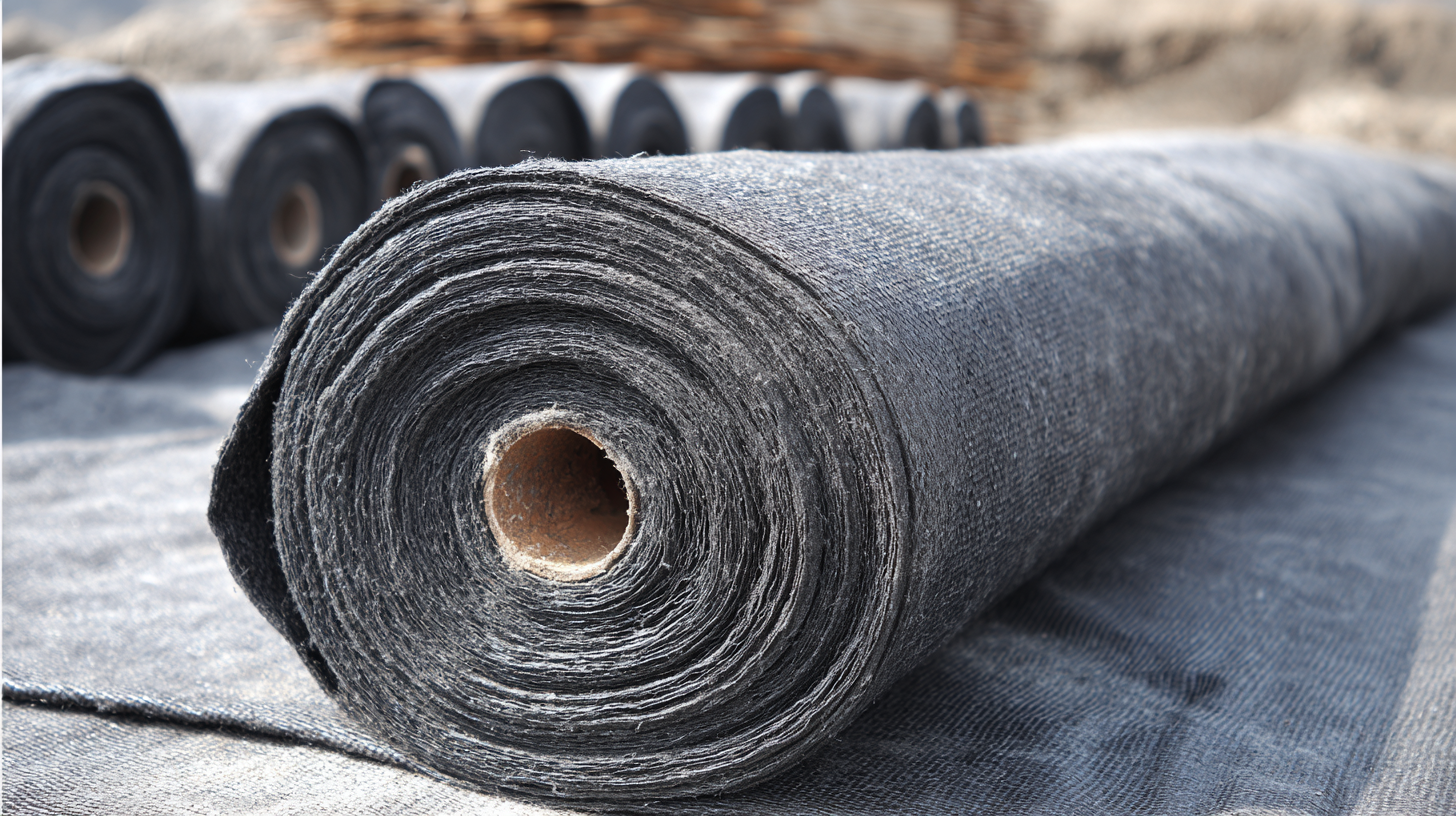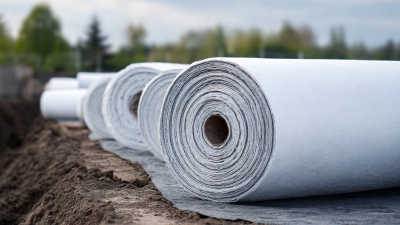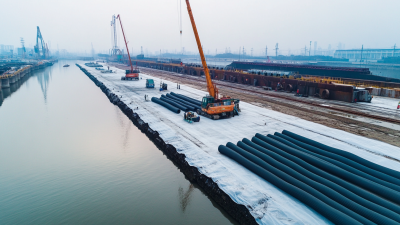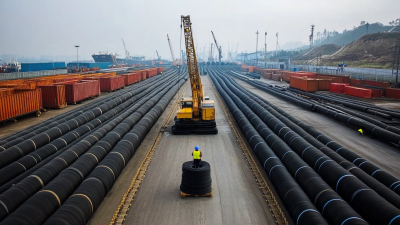Inquiry
Form loading...
- Phone
- E-mail
Geotextile Drainage Fabric has emerged as an essential component in modern construction practices, fundamentally revolutionizing the way we approach site drainage and soil stabilization. According to a 2021 industry report by MarketsandMarkets, the global geotextiles market is projected to reach $12.5 billion by 2026, growing at a CAGR of 9.6%. This exponential growth is largely driven by the increasing demand for sustainable infrastructure solutions, where Geotextile Drainage Fabric plays a crucial role in enhancing drainage performance and prolonging the lifespan of construction projects.

The implementation of Geotextile Drainage Fabric not only improves water management but also minimizes erosion and provides reinforcement to a variety of soil types. Moreover, research by the Federal Highway Administration indicates that proper drainage management can increase the longevity of roadways and pavements by up to 30%. As urban areas continue to expand and the need for reliable construction methodologies intensifies, understanding the benefits of Geotextile Drainage Fabric becomes paramount for engineers, architects, and construction managers alike. This article will explore the top ten advantages of this innovative material, shedding light on its indispensable role in modern construction practices.
Geotextile drainage fabric plays a crucial role in soil stabilization, offering numerous advantages in modern construction. According to recent reports, the global geosynthetics market is projected to reach $19.5 billion by 2025, highlighting the increasing recognition of these materials in infrastructure projects. Geotextiles enhance the load-bearing capacity of soil by distributing loads more evenly, effectively reducing soil movement and erosion. This characteristic is particularly vital in airport construction, where stability during heavy operational loads is paramount.
Additionally, airports are increasingly utilizing geotextile drainage fabrics to manage stormwater, thereby minimizing the risk of flooding and erosion. A study indicated that the use of geosynthetics in stormwater management can reduce runoff by approximately 30%, illustrating their effectiveness in environmental protection. Their ability to withstand extreme weather events, such as earthquakes, protects infrastructure and ensures long-term durability—a necessity as climate resilience becomes a focal point in construction. This integration of geotextiles not only protects investments but also contributes to safe and sustainable development practices in civil engineering.
| Feature | Description | Benefit |
|---|---|---|
| Soil Stabilization | Helps in reinforcing soil by providing a stable base. | Enhances load-bearing capacity and reduces settlement. |
| Drainage | Facilitates the movement of water through soil. | Reduces the risk of waterlogging and erosion. |
| Erosion Control | Prevents soil loss from wind and water action. | Protects landscapes and maintains the integrity of the structure. |
| Cost-Effective | Reduces the need for extensive drainage systems. | Lowers overall project costs and maintenance expenses. |
| Durability | Manufactured from high-quality synthetic materials. | Offers long-lasting performance in various applications. |
Geotextile drainage fabrics have emerged as essential components in modern construction, significantly enhancing water management efficiency. These innovative materials are designed to facilitate proper drainage and erosion control, thereby improving the longevity and sustainability of various infrastructure projects. By allowing for efficient water flow while preventing soil erosion, geotextile solutions contribute to maintaining the structural integrity of roads, slopes, and other critical construction elements.
In addition to their drainage capabilities, geotextiles can enhance the overall performance of construction sites by supporting soft ground improvement and optimizing agricultural drainage systems. Their ability to wick moisture away from surfaces not only helps in maintaining dry conditions but also aids in minimizing the impact of climate-related challenges, such as flooding and coastal erosion. As the market for geotextile products continues to grow, driven by the increasing demand for environmentally friendly construction solutions, the benefits of these fabrics in water management processes are becoming more widely recognized and implemented in various industries.

 Geotextile drainage fabric has emerged as a critical component in
sustainable construction practices, significantly contributing to environmental conservation.
According to a report by the Sustainable Construction Council, the use of geotextiles can reduce runoff
by up to 50%, effectively minimizing soil erosion and sedimentation
in nearby waterways. This capability is essential in preserving local ecosystems and ensuring compliance with
environmental regulations, which have become increasingly stringent in recent years.
Geotextile drainage fabric has emerged as a critical component in
sustainable construction practices, significantly contributing to environmental conservation.
According to a report by the Sustainable Construction Council, the use of geotextiles can reduce runoff
by up to 50%, effectively minimizing soil erosion and sedimentation
in nearby waterways. This capability is essential in preserving local ecosystems and ensuring compliance with
environmental regulations, which have become increasingly stringent in recent years.
Furthermore, these fabrics facilitate better water management by allowing for efficient drainage while
maintaining soil integrity. A study published in the Journal of Environmental Engineering reveals that projects
utilizing geotextile fabrics experience a 30% decrease in stormwater management costs.
This economic benefit, combined with their environmental advantages, underscores the importance of adopting
geotextile drainage solutions in modern construction. By integrating sustainable drainage practices,
the construction industry not only enhances its ecological footprint but also promotes a more resilient infrastructure
fit for future challenges.
Geotextile drainage fabric plays a crucial role in modern construction, contributing significantly to cost savings and the longevity of structures. By allowing water to flow through while preventing soil particles from passing, this fabric helps maintain the integrity of foundations and surrounding structures. Proper water management is essential for preventing soil erosion and instability, which can lead to costly repairs and shorten the lifespan of buildings. Implementing drainage fabrics can result in significant long-term savings by reducing maintenance costs and extending the viability of construction projects.
Tip: When selecting geotextile drainage fabric, consider the specific conditions of your construction site. Assess the soil type and drainage needs to choose a fabric with appropriate characteristics for optimal performance.
Another advantage of utilizing geotextile drainage fabric is its ease of installation, which can streamline the construction process. This efficiency not only reduces labor costs but also accelerates project timelines, allowing for quicker occupancy of new buildings. Structures reinforced with drainage fabrics are also less susceptible to water damage and related structural issues, offering peace of mind to builders and property owners alike.
Tip: Always ensure that the drainage fabric is properly secured and covered with the appropriate materials to maximize its effectiveness. Regular inspections can also help detect any potential issues before they escalate.
Geotextile drainage fabric plays a crucial role in enhancing site safety and accessibility in modern construction projects. By effectively managing water flow and soil stability, these fabrics prevent water accumulation that can lead to hazardous conditions on-site. Proper drainage reduces the risk of soil erosion, minimizing the chances of ground collapse, which can pose serious dangers to workers and equipment. The use of geotextiles also contributes to maintaining stable and safe working conditions, allowing construction activities to proceed without the interruptions caused by adverse weather conditions.
In addition to improving safety, geotextile applications significantly enhance accessibility on construction sites. By optimizing drainage, geotextiles create a more stable and navigable ground surface for moving machinery and personnel. This stability is especially important in heavy construction areas where the clear passage of equipment is essential. Moreover, geotextiles can help create effective access roads, ensuring that vehicles can safely transport materials and workers, thus streamlining operations and reducing delays. Overall, the integration of geotextile drainage fabric is fundamental in fostering a safe and efficient construction environment.
This chart represents the various benefits of using geotextile drainage fabric in modern construction, showcasing improvements in site safety, accessibility, and overall project efficiency.






